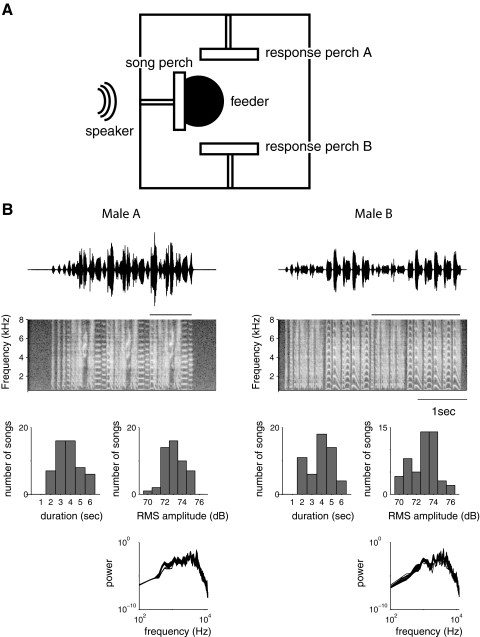Fig. 1.
An operant discrimination task to study song categorization. A: diagram of the operant cage seen from above. Three perches are located on three sides of the cage. After a hop on the central perch, the computer plays a song from the speaker located directly in front of it. The bird can respond by hopping on either of the 2 response perches. After a correct answer, a feeder (2 in diam, 0.5 in deep, located 0.5–0.75 in beneath the cage) is raised to be flush with the cage floor for 2–5 s, allowing the bird access to seed. After an incorrect answer, all perches cease to function for a 20–30 s time-out. B: songs used for training. The goal of our study was to train birds to associate each response perch with the songs of 1 individual. Example songs from the 2 individuals chosen are shown here both as oscillograms (sound pressure vs. time, top) and spectrograms (frequency vs. time, 2nd row). Each song is composed of several repeated motifs; in each song, 1 motif is indicated by the bar over the spectrograms. The 2 individuals differ in the temporal pattern (oscillogram) and frequency content (spectrogram) of their syllables. Fifty songs from each individual were used in training to avoid over-training on a single song rendition. The distribution of overall song durations, mean (RMS) amplitudes, and power spectra are similar for the 2 individuals as shown (bottom).

